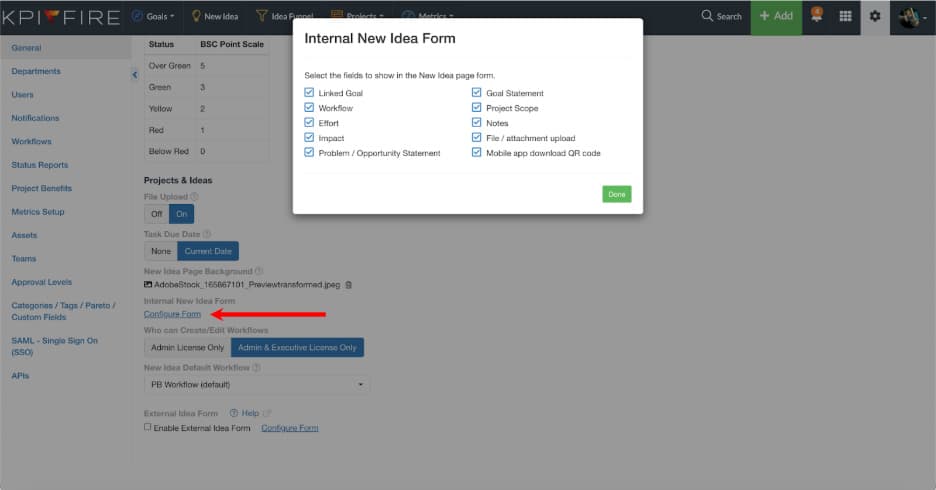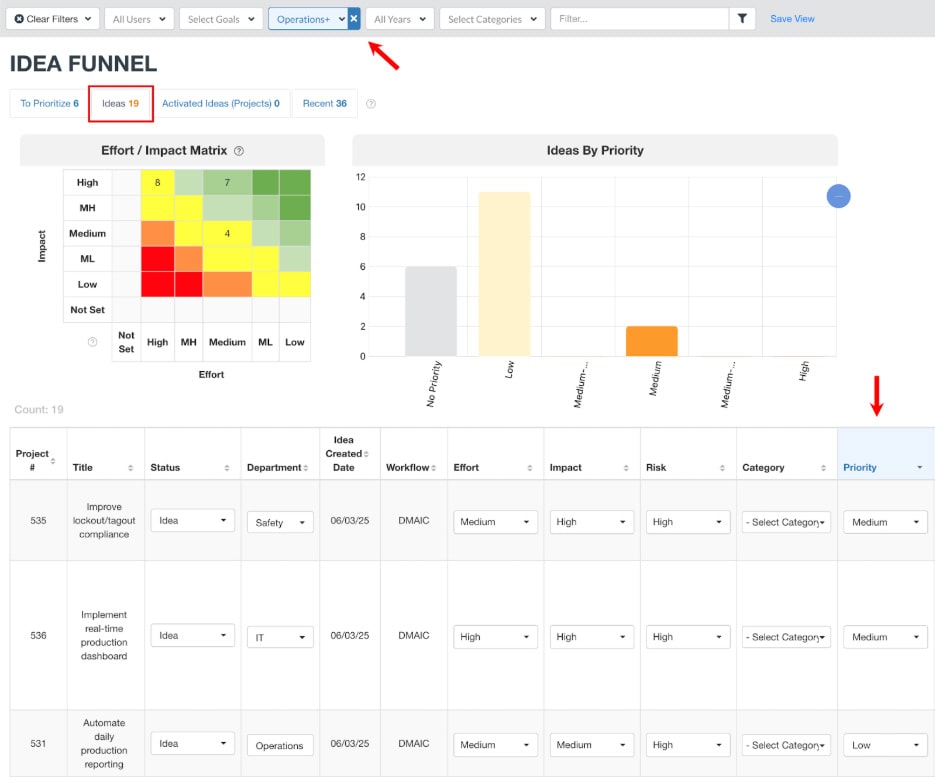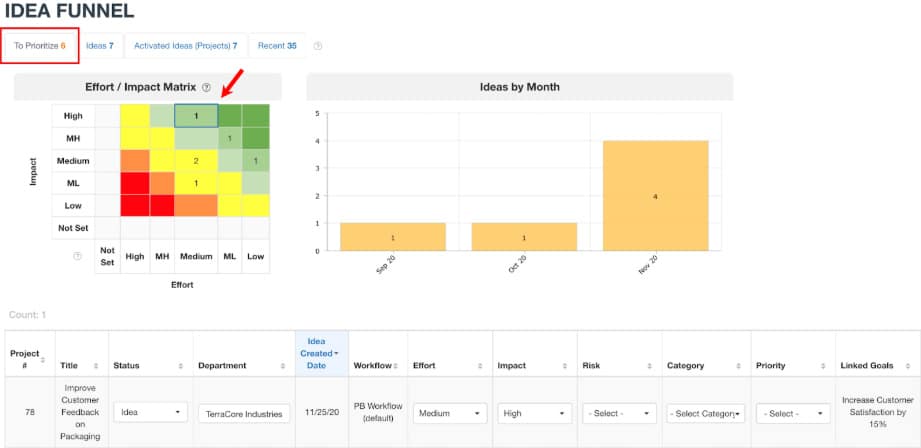Most organizations aren’t short on ideas.
They’re short on execution.
If your team is collecting submissions without a system to review, prioritize, and activate them—you’ve got an idea warehouse, not a working funnel. And over time, that warehouse becomes a graveyard of good intentions.
This guide walks through a practical, proven process to help Continuous Improvement (CI) leaders and department managers—especially in manufacturing and operational settings—build a high-functioning Idea Funnel pipeline that clears backlog, empowers contributors, and turns ideas into measurable results.
🚨 Why Most Funnels Get Stuck
You’ve likely felt this yourself:
- You ask for employee input, but hundreds of suggestions pile up.
- Only a few ever get reviewed—let alone implemented.
- Idea submitters stop participating because they never hear back.
- Department leaders are overloaded and unclear about what to prioritize next.
This isn’t about a lack of ideas—it’s about the lack of clarity and movement.
And in fast-paced environments like manufacturing, where frontline teams often have the best insight into inefficiencies, that stall-out can mean lost time, wasted resources, or even safety risks.
🧩 Prep Step: Collect What Actually Matters
Before you even triage ideas, make sure you’re collecting the right inputs.
Too many forms ask for too little—or too much. The result? Either not enough context to make a decision, or so much detail the form becomes a barrier.
✅ Recommended Fields:
- Idea Name
- Department
- Workflow
- Effort & Impact Estimates
- Problem and/or Goal Statement
🧰 Optional Add-ons:
- Attachments (e.g. photos from the shop floor)
- Linked Goals or Initiatives
- Estimated Savings or Time Reduction

🥅 Goal-Oriented & External User Idea Submission:
Create external forms that don’t require login and link to goals in KPI Fire — perfect for team members on the plant floor or in maintenance. Print out QR codes and post them near workstations to make contributing simple and visible.

The 3-Step Idea Funnel Process That Drives Results
A healthy funnel keeps your CI program flowing—not frozen.
Here’s the Idea Funnel pipeline:
- Activate what’s already prioritized
- Review and prioritize what’s new
- Clear out what doesn’t belong
No more sorting everything manually. No more guessing what to act on next. Just a clear path from intake to impact.
🏁 1. Activate Ideas Intentionally
Start with the ideas that have already been reviewed and prioritized.
In KPI Fire, go to the Ideas tab of the Idea Funnel:
- Filter view by department (optional)
- Sort table by priority
- Cross reference the Project List View to check your current project load and team capacity.
- If it fits—activate the idea by changing the status to Active and start moving!

Example in manufacturing: A frontline worker suggested adding a quick visual inspection step before machine changeovers. The idea was already prioritized, the resource cost was low, and the impact was high (fewer scrap issues). It was activated the same week—and paid off within the first month.
⭐️ 2. Prioritize With Purpose
Next, move to the “To Prioritize” tab.
This is your triage zone. Use filters and sorting to order then prioritize ideas efficiently:
- Filter view by department (optional)
- Filter by clicking through the Effort vs. Impact Matrix
- Review strategic Alignment: Linked Goals, Category
- Sort or filter by Total Target Benefit
- Assess Risk level
- Filter by Workflow (PDCA, DMAIC, Just Do It (JDI), etc.)
- Sort by Idea Created Date – start with newer first

You’re not just looking for “quick wins”—you’re looking for the right wins.
A high-priority idea typically checks three boxes:
- High Potential Impact – Will it make a noticeable difference?
- Low to Moderate Effort – Can we implement it without draining our resources?
- Strategic Fit – Does it align with our current goals, KPIs, or known problems?
Think of prioritization like balancing a scale—ideas that offer strong impact with reasonable effort and clear relevance rise to the top.
You’re aiming to maximize gain and minimize strain.
The ideal formula:
✅ High Priority = High Impact + Low Effort + Strategic Fit
🚫 3. Reject or Remove Low-Value Ideas
Don’t let your idea funnel become an idea landfill.
Every unreviewed or outdated idea creates noise that makes it harder to see what matters.
- Reject, archive, or delete irrelevant or stale submissions.
- Document why an idea wasn’t activated—transparency keeps trust alive.
- Schedule a monthly funnel cleanup.
Just like sweeping the floor in your facility, clearing out bad ideas is routine maintenance for your CI pipeline.
🙌 Recognize the People Behind the Ideas
When someone’s idea gets activated, tell them. Celebrate it publicly.
Even better—let them help implement it.
This reinforces a culture where ideas are valued, not just submitted.
💬 “I never thought they’d actually do something with my idea.”
That’s the kind of comment you want to hear—right before that employee submits their next one.
📊 Know Your Funnel’s Health (With These 4 Numbers)
Track these four metrics to measure how well your funnel is functioning:
| Metric | What It Tells You |
| Total # of Ideas | Are people contributing across departments? |
| Ideas Without Priority | Are you reviewing and sorting regularly? |
| Activated Ideas (30 Days) | Are you moving ideas into action consistently? |
| Active Projects | Are you overloaded or managing capacity well? |
What Good (and Bad) Looks Like
Here’s how to interpret each number and what it signals about your funnel’s health:
1. Total # of Ideas
- 🟢 Good: You’re seeing a steady flow of submissions across multiple departments. This shows a culture where input is valued and teams are engaged.
- 🔴 Bad: Either very few ideas are coming in (which could mean low morale or poor awareness), or you’ve got an enormous pile with no signs of review—which means hoarding, not managing.
2. Ideas Without Priority
- 🟢 Good: A small portion of your ideas are awaiting review. This suggests that new submissions are being addressed in a timely fashion.
- 🔴 Bad: A large percentage of your ideas are unprioritized, which signals either a lack of ownership, a slow triage process, or unclear review roles.
3. Activated Ideas (Last 30 Days)
- 🟢 Good: You’re activating a meaningful number of ideas each month, reflecting consistent review and available capacity to take action.
- 🔴 Bad: There’s little to no movement—new ideas aren’t converting into projects. This could reflect resource constraints, unclear activation criteria, or decision fatigue.
4. Active Projects
- 🟢 Good: The number of active projects aligns with team bandwidth. Things are moving forward, and projects are being completed or managed effectively.
- 🔴 Bad: Either too many projects are open with little progress, or the team is underutilized with too few in motion. In either case, the flow is disrupted.
The goal isn’t perfection—it’s balance. You want to consistently collect, review, and activate ideas at a pace that matches your team’s ability to deliver.
🛠️ Final Takeaway
Progress isn’t passive.
If your funnel is just collecting ideas, you’re not moving forward—you’re just waiting around.
A healthy Idea Funnel Pipeline gives you:
- A structured system to prioritize and act
- Clarity for department leaders
- Recognition for team contributors
- Measurable impact for the business
Now’s the time to move from backlog to breakthrough.



